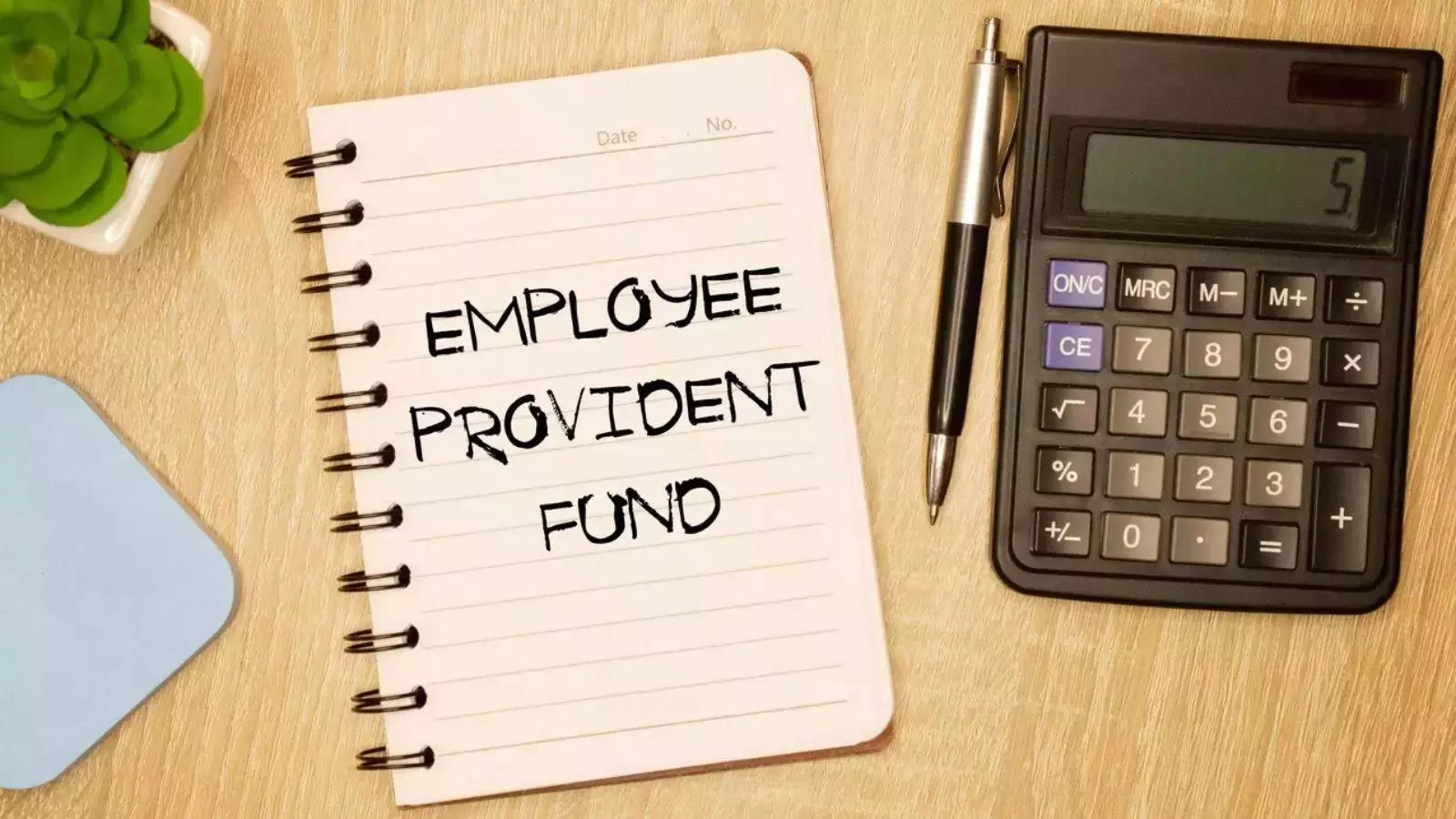The Employee Provident Fund (EPF) serves as a long-term retirement saving scheme for salaried employees in India, governed under the Employees Provident Fund & Miscellaneous Provisions Act, 1952. Through mandatory contributions from both the employee and the employer, EPF enables individuals to accumulate a considerable retirement corpus over their career. Here’s a look at how the scheme operates, its tax implications, and recent updates regarding interest rates.
Understanding EPF Contributions
The EPF scheme requires both the employee and employer to contribute a percentage of the employee’s salary each month. Typically, the employee contributes 12% of their basic pay, which goes directly into their EPF account. The employer, however, divides its share, allocating 3.67% of the employee's salary to EPF and 8.33% to the Employees’ Pension Scheme (EPS). For employers, contributions to EPS are capped at Rs. 1,250 per month for employees earning a basic salary of Rs. 15,000 or more.
Interest Rates on EPF for 2024
The EPF account accrues interest on both the employee and employer contributions, with the interest rate for FY 2023-24 set at 8.25%. Although interest is calculated monthly, it is only credited annually on March 31, providing employees a consolidated amount for the entire financial year. Monthly interest calculation uses a prorated rate, which breaks down to approximately 0.688% each month, ensuring growth over time.
Tax Benefits and Exemptions
EPF contributions offer significant tax benefits. Under Section 80C of the Indian Income Tax Act, employees can claim deductions on contributions up to Rs. 1.5 lakh annually. Additionally, if EPF funds are withdrawn after five continuous years of contribution, the withdrawal amount is tax-free. This provision makes EPF a tax-efficient savings scheme, as it supports tax savings on contributions and, under specific conditions, on withdrawals as well.
Taxation on Excess Contributions and Inactive Accounts
While EPF offers considerable tax benefits, contributions above Rs. 2.5 lakh per year are subject to tax, with the interest on the excess amount also taxed. This provision was introduced to prevent high-income earners from amassing large, tax-free balances. Moreover, an EPF account that remains inactive for over three years becomes dormant, with no further interest credited. However, any interest accrued while the account was active is taxable.
Early Withdrawals and Partial Withdrawal Rules
EPF allows partial withdrawals under specific circumstances, such as medical emergencies, housing, or marriage. While these withdrawals are generally tax-free if the employee has been contributing to the EPF for at least five years, withdrawals made within a shorter tenure may incur taxes. This flexibility makes EPF a versatile tool, catering not only to retirement savings but also to pressing financial needs.
TDS on EPF Withdrawals
Recent changes in the Union Budget 2023 have adjusted the Tax Deducted at Source (TDS) rate for EPF withdrawals. For individuals without a Permanent Account Number (PAN), the TDS rate has been reduced from 30% to 20%. This change helps employees retain a larger portion of their funds upon withdrawal, especially for those who may not have PANs registered with their accounts.
EPF Account Dormancy Rules
An EPF account becomes dormant if there are no contributions for a consecutive period of 36 months, generally due to job changes or retirement. Dormant accounts do not accrue interest, impacting the total retirement corpus. Employees are encouraged to transfer their EPF balance to new accounts when switching jobs to keep the funds active and growing.
How to Access Your EPF Account
With the advent of digital services, managing your EPF account has become easier. The Employees’ Provident Fund Organisation (EPFO) offers an online portal for employees to check their balances, view passbooks, and initiate transfers between accounts. The Universal Account Number (UAN), a unique identifier assigned to each member, streamlines this process, ensuring continuity across job changes.
Why EPF Remains a Reliable Investment
Despite fluctuations in interest rates and changing tax regulations, EPF remains a valuable component of an employee's retirement portfolio. Its compulsory contributions instill a habit of savings, while government-backed interest rates ensure steady growth. EPF is particularly appealing for risk-averse individuals who prefer stable, long-term investments with the added benefit of tax deductions.
Final Thoughts on Planning Early with EPF
Starting contributions early in one’s career is key to maximizing benefits from the EPF scheme. With consistent contributions, employees can build a substantial corpus by the time they retire, benefiting from the power of compound interest over decades. Staying informed about policy changes, tax implications, and contribution limits can help employees optimise their EPF strategy for a secure retirement.
Understanding EPF Contributions
The EPF scheme requires both the employee and employer to contribute a percentage of the employee’s salary each month. Typically, the employee contributes 12% of their basic pay, which goes directly into their EPF account. The employer, however, divides its share, allocating 3.67% of the employee's salary to EPF and 8.33% to the Employees’ Pension Scheme (EPS). For employers, contributions to EPS are capped at Rs. 1,250 per month for employees earning a basic salary of Rs. 15,000 or more.
Interest Rates on EPF for 2024
The EPF account accrues interest on both the employee and employer contributions, with the interest rate for FY 2023-24 set at 8.25%. Although interest is calculated monthly, it is only credited annually on March 31, providing employees a consolidated amount for the entire financial year. Monthly interest calculation uses a prorated rate, which breaks down to approximately 0.688% each month, ensuring growth over time.
Tax Benefits and Exemptions
EPF contributions offer significant tax benefits. Under Section 80C of the Indian Income Tax Act, employees can claim deductions on contributions up to Rs. 1.5 lakh annually. Additionally, if EPF funds are withdrawn after five continuous years of contribution, the withdrawal amount is tax-free. This provision makes EPF a tax-efficient savings scheme, as it supports tax savings on contributions and, under specific conditions, on withdrawals as well.
Taxation on Excess Contributions and Inactive Accounts
While EPF offers considerable tax benefits, contributions above Rs. 2.5 lakh per year are subject to tax, with the interest on the excess amount also taxed. This provision was introduced to prevent high-income earners from amassing large, tax-free balances. Moreover, an EPF account that remains inactive for over three years becomes dormant, with no further interest credited. However, any interest accrued while the account was active is taxable.
Early Withdrawals and Partial Withdrawal Rules
EPF allows partial withdrawals under specific circumstances, such as medical emergencies, housing, or marriage. While these withdrawals are generally tax-free if the employee has been contributing to the EPF for at least five years, withdrawals made within a shorter tenure may incur taxes. This flexibility makes EPF a versatile tool, catering not only to retirement savings but also to pressing financial needs.
TDS on EPF Withdrawals
Recent changes in the Union Budget 2023 have adjusted the Tax Deducted at Source (TDS) rate for EPF withdrawals. For individuals without a Permanent Account Number (PAN), the TDS rate has been reduced from 30% to 20%. This change helps employees retain a larger portion of their funds upon withdrawal, especially for those who may not have PANs registered with their accounts.
EPF Account Dormancy Rules
An EPF account becomes dormant if there are no contributions for a consecutive period of 36 months, generally due to job changes or retirement. Dormant accounts do not accrue interest, impacting the total retirement corpus. Employees are encouraged to transfer their EPF balance to new accounts when switching jobs to keep the funds active and growing.
How to Access Your EPF Account
With the advent of digital services, managing your EPF account has become easier. The Employees’ Provident Fund Organisation (EPFO) offers an online portal for employees to check their balances, view passbooks, and initiate transfers between accounts. The Universal Account Number (UAN), a unique identifier assigned to each member, streamlines this process, ensuring continuity across job changes.
Why EPF Remains a Reliable Investment
Despite fluctuations in interest rates and changing tax regulations, EPF remains a valuable component of an employee's retirement portfolio. Its compulsory contributions instill a habit of savings, while government-backed interest rates ensure steady growth. EPF is particularly appealing for risk-averse individuals who prefer stable, long-term investments with the added benefit of tax deductions.
Final Thoughts on Planning Early with EPF
Starting contributions early in one’s career is key to maximizing benefits from the EPF scheme. With consistent contributions, employees can build a substantial corpus by the time they retire, benefiting from the power of compound interest over decades. Staying informed about policy changes, tax implications, and contribution limits can help employees optimise their EPF strategy for a secure retirement.
You may also like

Why Matt Gaetz's momination as attorney general in Trump's cabinet has left many Republicans 'shocked'

Doda DC Harvinder Singh launches 'Poshan Abhiyaan' mobile van to create nutrition awareness among people

PM Modi pays tribute to Pandit Nehru on 135th birth anniversary

Reports indicate that Mahayuti will register massive victory in Maharashtra: Piyush Goyal ahead of Assembly polls

'He is a child in front of Indira Gandhi': Kharge reacts to Amit Shah's remarks on ex-PM







